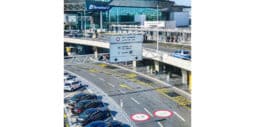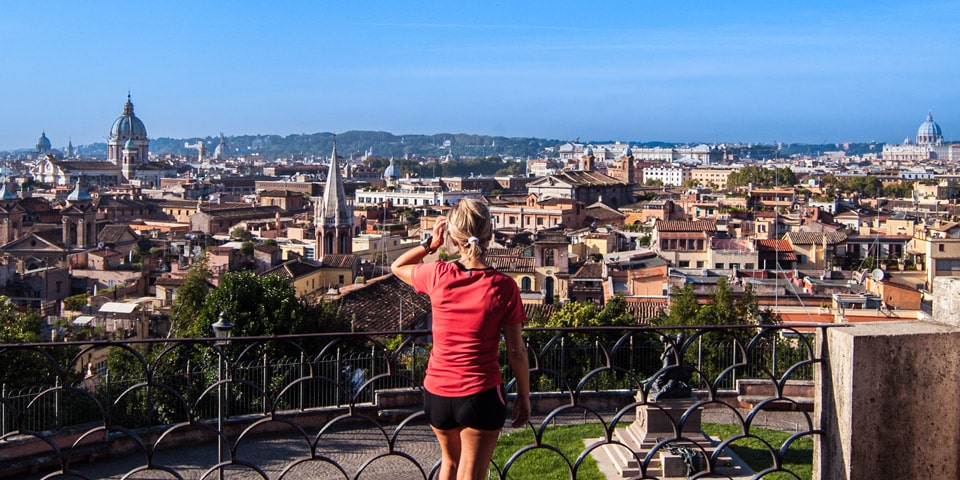

24837 views

| Tip | You can reach Pincian hill either by climbing the stairs on Piazza del Popolo or walk through Villa Borghese by following the signs towards the Pincian terrace. |
|---|---|
| Address | Viale Gabriele D'Annunzio, Roma |
Pincian Hill (Pincio) rises immediately north of the Quirinal Hill. Although it is not counted among the legendary Seven Hills of Rome, the Pincio remains one of the city’s most beloved viewpoints.
Contents
ToggleIn antiquity, the Pincio lay outside Rome’s original boundaries; only with Emperor Aurelian’s defensive walls (3rd century AD) was it brought within the city. Its modern name honours the Pincii, the powerful family that owned the ridge in the 4th century. Lush private gardens once covered the slopes, earning it the nickname Collis Hortulorum—the “Hill of Little Gardens.”
Ancient writers record that the ashes of Emperor Nero were interred in the Domitii family tomb on the hill’s flank.
Today, the Pincio embraces several renowned villas and crowns the sweeping Piazza del Popolo. Between 1802 and 1814, Napoleon commissioned French architect Giuseppe Valadier to redesign the entire area, blending formal terraces with the natural contours of the hillside. Valadier completed Piazza del Popolo in 1816, creating the elegant ensemble visitors enjoy today.
The highlights below fit comfortably into a half-day. Begin your exploration through one of three classic approaches:
Pope Sixtus V commissioned the first major redesign of the “People’s Square.”
Three great streets radiate southward from the square:
The 24-metre Flaminio Obelisk is at the center, brought from the Circus Maximus in 1589; the red-granite monolith is more than 3,400 years old. To the north rises Porta del Popolo, once the principal gateway for travellers arriving via the Via Flaminia. On the south side, twin Baroque churches—Santa Maria dei Miracoli and Santa Maria in Montesanto—frame the entrance to Via del Corso. The east side hosts Valadier’s monumental staircase up to the Pincio Terrace, Rome’s finest sunset balcony.
Address: Piazza del Popolo
Housed inside the 17th-century Villa Borghese, the Borghese Gallery preserves one of the world’s most significant private art collections.
Cardinal Scipione Borghese, nephew of Pope Paul V, commissioned the villa from Flemish architect Giovanni Vasanzio and filled it with works by Bernini, Caravaggio, Titian, Raphael and others. Pietro Bernini’s landscaping later transformed the surrounding vineyard into the 80-hectare park Romans cherish today.
Website: borghese.gallery
Commissioned by King Louis XII of France in 1502 and crowned with its twin bell-towers in the late 16th century, Trinità dei Monti presides over the Spanish Steps beside the Sallustian Obelisk.
Inside, don’t miss Daniele da Volterra’s celebrated “Deposition” and the anamorphic frescoes that spring to life from a single viewpoint. Step outside for postcard-perfect views down Via Condotti to St Peter’s dome.
Ferdinando de’ Medici purchased this Renaissance palace in 1576.
Since 1803 the complex has hosted the French Academy in Rome, transferred here on Napoleon’s orders so that young artists could immerse themselves in classical antiquity. The villa is open to the public on guided tours and rewards visitors with enchanting gardens and sweeping city views.
Address: Viale della Trinità dei Monti 1
Created in 1589 by architect Annibale Lippi for Cardinal Ferdinando de’ Medici, this understated octagonal fountain re-uses an ancient red-granite basin perched on a baluster within a shallow pool.
A stray cannon-shot fired from Castel Sant’Angelo in the 19th century supposedly lodged in its rim, earning the nickname “Fontana della Palla di Cannone.”
Sheltered by pines just outside Villa Medici’s entrance, it offers a quiet pause before you continue into the gardens or toward the Spanish Steps.
Pincio Terrace crowns the hillside just above Piazza del Popolo and is widely considered Rome’s finest sunset balcony.
From this balustraded lookout you can trace the Tiber’s curve, pick out St Peter’s dome and watch the city’s rooftops glow gold at dusk. A gentle five-minute stroll through Villa Borghese brings you here.
Tucked beside a lily pond along Viale dell’Obelisco stands the Water Clock of the Pincio—a quirky 1867 hydro-chronometer designed by Dominican friar Gian Battista Embriaco and engineer Gioacchino Ersoch. Propelled entirely by flowing water, its exposed gears still tick away the hours, delighting passers-by with a slice of 19th-century ingenuity.
Commissioned by Prince Camillo Borghese and completed by architect Luigi Canina in 1827-29, these twin neoclassical pavilions once formed the ceremonial gateway to Villa Borghese from Piazzale Flaminio.
Flanked by Corinthian columns and crowned with terracotta eagles, the Propilei echo the Propylaea of the Athenian Acropolis, marking the transition from bustling city streets to the park’s leafy avenues.
This bronze group by sculptor Ercole Rosa (1883) captures Giovanni Cairoli, revolver raised, supporting his mortally wounded brother Enrico during their ill-fated 1867 raid on Villa Glori.
Set back along Viale del Pincio, the monument is often overlooked, yet its raw dynamism and patriotic pathos embody the sacrifices that forged a unified Italy. Take a moment here to discover one of Rome’s most poignant—and least-noticed—memorials.
Address: at the start of Viale Adam Mickiewicz, beneath Terrazza del Belvedere
Built into the Aurelian Walls by Emperor Honorius around AD 402, Porta Pinciana once guarded the northern route into Rome along the ancient Via Pinciana.
Known in the Middle Ages as Porta Turata (“walled-up gate”), it was reopened and flanked with side arches by Pope Pius IX in 1860. Legend has the disgraced general Belisarius begging for alms here; today the same modest arch ushers traffic toward Villa Borghese and chic Via Veneto.
Address: Via Vittorio Veneto 196
Author: Artur Jakucewicz
This website uses cookies. For more info read the cookies policy
Rome.us © 2025. Created with love by Roman experts and guides.